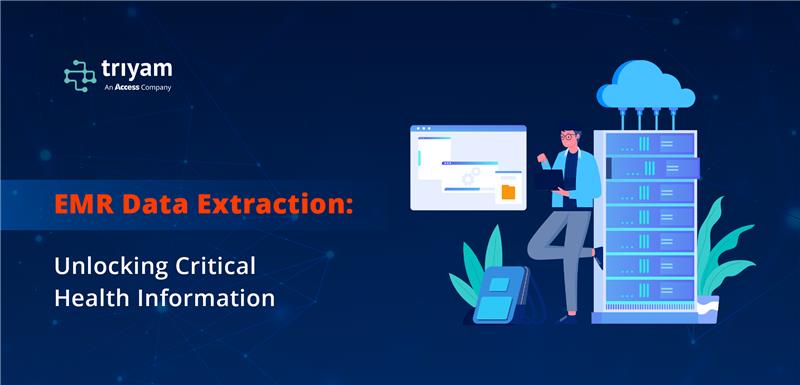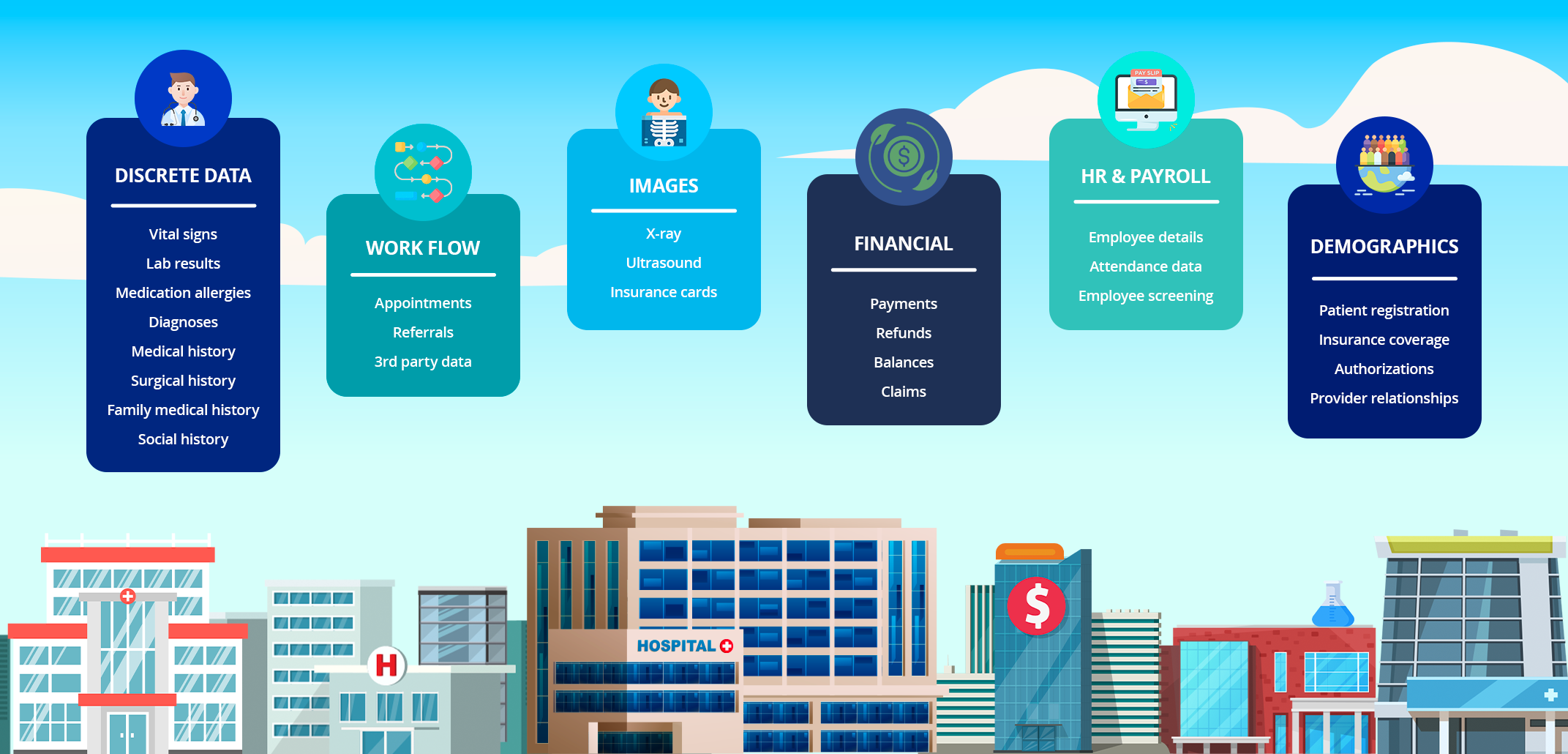
EMR data extraction is the 1st most important step in replacing an EMR. Accurate EMR data extraction is key to successful transformation and loading, resulting in a medical data conversion or migration that IT and data governance teams can trust.
Triyam has 13 years of experience in extracting or migrating patient, employee or business records from over 100 EHR and ERPs. That includes the major leading EHR brands you would expect like EPIC, Cerner, MEDITECH , CPSI, Alterra, Medhost, eClinicalWorks, Greenway, etc. We provide ERP and EMR data extraction for healthcare systems, hospitals, and medical practices of any size. We also manage data for labs, blood banks, perinatal units, community health centers, long-term care facilities, retail clinics, pharmacies, dental practices, correctional facilities, and more.
What is EMR Data Extraction?
EMR data extraction involves retrieving specific information from an Electronic Medical Record (EMR) system, such as diagnoses, medications, lab results, and medical history. This data is extracted for use in analysis, research, or to transfer to another system. The process includes pulling structured data fields as well as analyzing unstructured text from clinical notes to derive meaningful insights.
How is EMR Data Extraction Done?
- Application Programming Interfaces (APIs): Facilitate communication between different software components.
- AI tools: Capable of extracting information from unstructured data.
- Clinical data extraction pipelines: Utilize natural language processing and computer vision to gather data.
- Data extraction services: Extract information from multiple source systems, such as EMRs, EHRs, and other clinical platforms.
How To Retrieve/Extract Data From an EMR?
Retrieving data from an EMR can be tricky if you’re not familiar with the different methods. EMRs typically contain a mix of structured and unstructured data.
While most data extraction processes focus on structured data, it’s crucial to address the considerable amount of unstructured data as well. In this post, we’ll walk you through the easiest ways to extract data from EMRs.

Understanding EMR Data Structure
A solid grasp of Electronic Medical Record (EMR) data structure is crucial for healthcare providers, informaticians, and data analysts. It plays a key role in delivering efficient healthcare services and supporting research. A well-organized EMR system improves patient care, streamlines workflows, enhances data accuracy, and ensures legal and regulatory compliance. Below is a brief overview of the main components of EMR data.
- Patient Demographics: EMRs begin with patient details like name, date of birth, gender, race, ethnicity, contact information, insurance details, etc. This section is essential for patient identification and forms the basis for linking clinical data.
- Clinical Documentation: This section stores all clinical interactions, including progress notes, treatment plans, medical histories, surgical reports, discharge summaries, and medication orders. Templates ensure consistent capture of important data.
- Medication Information: EMRs track both prescribed and over-the-counter medications, including dosages, instructions, allergies, and adverse reactions. This aids in prescription management and medication reconciliation.
- Diagnostic Data: EMRs capture diagnostic information like lab results and radiology reports in structured formats. Integration with lab and radiology systems ensures seamless data flow.
- Coding and Billing Information: Accurate coding of diagnoses and procedures ensures proper reimbursement from insurers or government programs. EMR systems integrate with standards like CPT and ICD codes to maintain compliance and support revenue management.
- Security and Privacy: EMRs incorporate strong security features, such as access controls, encryption, and audit trails, to comply with regulations like HIPAA and protect patient data.
Data Extraction Techniques
Automated data extraction utilizes advanced technologies to efficiently identify, collect, and process data from various sources, minimizing human input and improving scalability for large datasets. Below are key extraction techniques:
- Optical Character Recognition (OCR):
OCR converts scanned documents, PDFs, or images into machine-readable text, accurately capturing both text and formatting for digital storage, indexing, and editing - Web Scraping:
Web scraping uses automated scripts to parse website content and extract structured data based on predefined rules, such as product details or pricing. - Data Mining and Text Analytics:
Data mining identifies patterns and trends in large datasets, while text analytics applies algorithms to extract entities, keywords, or sentiments from unstructured data sources. - APIs (Application Programming Interfaces):
APIs allow programmatic access to software systems and databases, facilitating structured, automated data retrieval without direct access to the underlying system. - ETL (Extract, Transform, Load):
ETL processes extract data from diverse sources, transform it into a standardized format, and load it into target databases or warehouses, often in scheduled, automated workflows. - Natural Language Processing (NLP):
NLP techniques extract key information such as named entities, relationships, or sentiment from unstructured text, enabling analysis of free-text data like clinical notes or customer feedback. These techniques provide efficient, scalable solutions for converting raw data into actionable insights, reducing errors, speeding up processing, and supporting real-time analysis.
What are The Benefits of EMR Data Extraction?
- Boost Treatment Efficiency – Accessing a patient’s complete medical history instantly enhances your ability to provide quality care. Data extraction simplifies and organizes both raw and filtered data, making it easier to evaluate treatment options. With well-processed data, you can compare treatment effectiveness and choose the best approach.
- More Accurate Diagnoses – Skilled clinicians know that a patient’s primary complaint is often linked to several underlying conditions. With data extraction tools from Triyam you can efficiently analyze data from your EHR and external sources automatically.
- Improve Clinical Decision-Making – More hospitals are using clinical decision support systems (CDSS) to analyze data and make predictions through rules or machine learning. Data extraction helps clinicians quickly compare a patient’s medical history and symptoms with current research or similar cases.
